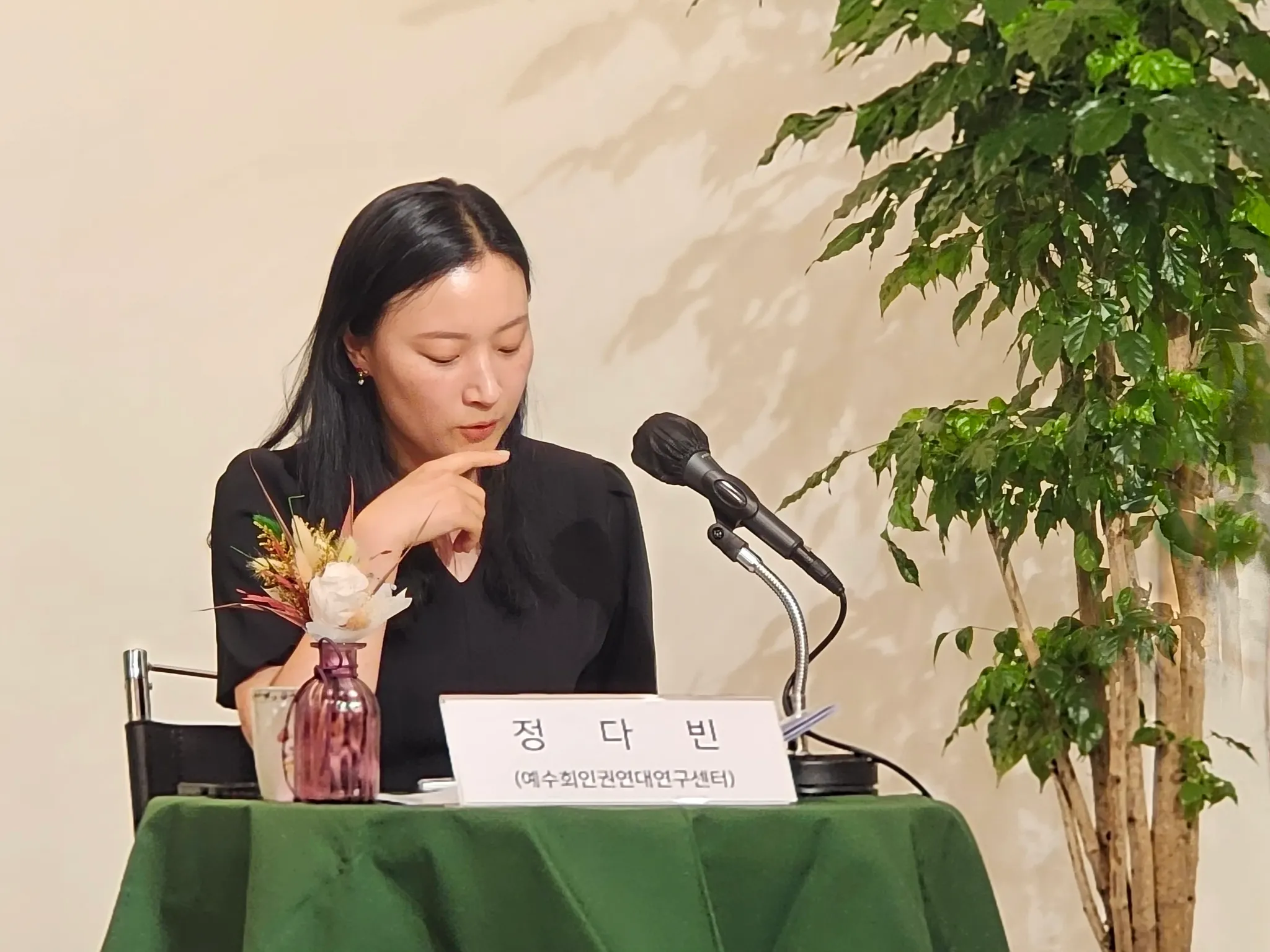: Visualizing Coercion, Victimhood, and Purity
2024년 5월 Forced Labour in Transnational Perspective Workshop in Berlin
Introduction and Background
Hello everyone. My name is Dabin, and I am a student in the Critical Global Studies Program at Sogang University. Today, I will discuss the representations of comfort women, focusing on the Girl of Peace statue and its implications. Specifically, I will examine how the movement aimed to show, through the innocence of the girl, that the comfort women's sex work was forced.
The Girl of Peace, also known as the Statue of Peace or Sonyeosang, is a bronze sculpture of a young girl in traditional Korean clothing. Created to honor the victims of Japanese military sexual slavery during World War II, it has become a powerful symbol of the comfort women's fight for justice. However, the statue's design has faced criticism for potentially oversimplifying the diverse experiences of the women it represents.
The Girl of Peace and the Visualization of Purity
The Girl of Peace statue is the most representative figure of the movement. It was first erected in 2011 in front of the Japanese Embassy in South Korea by a civil society organization fighting for justice for Japanese comfort women since the 1990s. The symbol of the movement is a girl around the age of fifteen, with short hair and an empty chair beside her. While the movement was about surviving women, the symbol became a girl, with the older women represented only as shadows.
The artist who created the sculpture explained that the women were girls when they were taken, so the sculpture is in the form of a girl. However, this sparked controversy, as the ideology of purity that the statue visualized made the movement so effective. The young, innocent girl was an effective way to show victimhood, but many different voices of victims were not included in this symbol. The age of the victims who were forcibly recruited is debated, as there are no official records and different scholars have different standards. While many were underage, their ages ranged from their mid-teens to late 20s.
It is often overlooked that older women who fled their homes to escape poverty due to employment fraud were also victims of state violence. The Girl of Peace statue has been criticized for emphasizing youth, innocence, and purity, reflecting patriarchal ideologies. This representation risks oversimplifying the diverse experiences of comfort women by reinforcing the dichotomy between "pure victims" and "impure women."
The Need for New Symbols and Reimagining
The comfort women exhibit at South Korea's Independence Memorial Hall is also noteworthy. These exhibits address comfort women's memories but frame their stories as part of the broader national suffering under Japanese colonization, rather than individual trauma. This reflects the typical way Korean society has viewed the issue of Japanese comfort women. The issue gained widespread support because it functioned as a national memory of aggression rather than individual trauma.
In seeking international support and solidarity as a strategy to obtain an apology and reparations from the Japanese government, the memory of the comfort women has achieved globalization, and the girl statue has gained universality as a global victim. The movement to erect girl statues now spans the globe, including the United States, Australia, and Germany. Even in Berlin, where we are now, the debate over the removal of the girl statue is ongoing. As the movement to build girl statues gained popularity, we saw variations on the initial design. Initially, copyright issues led to the creation of new designs of statues, but they rarely deviated from the traditional representation: a young girl with short hair wearing a modern-style hanbok.
Some artists have proposed alternative designs to better represent the diverse experiences and resilience of the comfort women. The new statues attempt to overcome the ideology of purity visualized by the original girl statues, intentionally using words like justice and peace in their names instead of "girl."
Attempts to imagine a new kind of statue are ongoing. In response to the Brave Girl statue on Wall Street, one Korean feminist commented that she hoped the Korean girl statue would look like that. Others argue for a "fighting grandmother" statue, not the girl statue of peace.
Conclusion: Toward New Symbols of Peace
Personally, I was a student in my 20s who wore a Girl of Peace badge on my bag and gave it to my Japanese friends as a gift. However, I have been troubled by the symbolism of the Girl of Peace for a few years now, and this presentation was an opportunity to share my concerns. While preparing for this presentation, my concerns deepened. Symbols inevitably simplify the context, making it hard to decide what alternative statues or visualizations are needed.
But I am more convinced than ever that this debate brings us closer to what the Japanese comfort women's movement really aims for: a peaceful world free of war and violence. So while attempts to remember and show the painful past will have to continue, attempts to look at the broader horizon will have to continue as well.
Finally, I will end my presentation with a picture of comfort women survivor and human rights activist Gil Won Ok 할머니, taken during her visit to Berlin in 2017, where she is shown singing. She is one of the few surviving comfort women. I’ll end my presentation with her smile and thank you for your attention.
